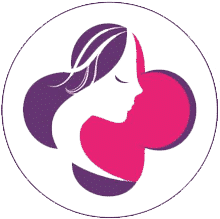Fibroids
Fibroids
Fibroid Uterus
Overview
Fibroids are growths from the muscle layer of the uterus. They are very commonly seen. They can be present either inside the uterus or outside it. Fibroids are benign tumors and very rarely can show cancerous changes.
Causes
The exact cause of fibroids is unknown. Hormonal, genetic and lifestyle factors may influence its development. Female hormones estrogen and progesterone have been shown to influence the development of fibroids.
Symptoms
Fibroids can vary in size from too small to too big. Most of the fibroids are small and symptomless. Symptoms vary with the size, number and location of the fibroids. If the fibroids are large in size or if there are multiple fibroids, it will cause more symptoms.
Increased menstrual bleeding— Fibroids can increase the amount of blood flow and duration of bleeding during menstrual cycle, further leading to iron deficiency anemia.
Pelvic pressure and pain — Large fibroids can cause heaviness in lower abdomen and pressure symptoms on surrounding organs. For example, an anterior wall fibroid can press the bladder and cause increased frequency of urination whereas a posterior fibroid can put pressure on the rectum resulting in constipation.
Infertility— Some fibroids that are located near the uterine cavity can distort the cavity and lead to problems in conceiving. Fibroids on outer surface of the uterus generally do not cause any fertility issues.
Pregnancy complications– Larger fibroids have shown to increase the complications in pregnancy such as miscarriages, growth restrictions, placental complications etc.
Diagnosis
Fibroids can be diagnosed clinically by good pelvic examination. A mass can be felt in the pelvis on abdominal examination, which is further confirmed on per vaginal examination. A pelvic ultrasound is needed to confirm the diagnosis.
Treatment
Asymptomatic women do not need treatment. In symptomatic women, treatment depends on the symptoms, number, size, location of the fibroids and desire for future pregnancy. It can be either medical or surgical.
Medical Treatment
Most medical treatment is used for reducing the blood loss and pain during periods; reducing the size of the fibroids and treating anemia. It is also used before surgery to build up the hemoglobin and buy some time before the big day.
Iron and vitamins — For improving hemoglobin in anemic women.
Nonsteroidal antiinflammatory drugs (NSAIDs) & Antifibrinolytics — They are first line drugs used for reducing the amount of bleeding and pain during periods. They are safe, cost-effective and fast acting drugs with minimal side-effects. They need to be taken only during your periods.
Oral contraceptive pills– These are hormonal pills and have to be taken for 3 weeks continuously. They reduce bleeding, cramps, and pain during your menstrual period. They are easily available but associated with minor and major side effects.
Intra-uterine device (Mirena) – It is a hormonal intra-uterine device releasing progesterone. It is helpful in heavy bleeding and has no systemic side effects like oral pills. It provides additional benefit of contraception for 5 years.
Progesterone receptor modulators — These are newer drugs, being increasingly used now a day due to their fast and effective action.
Gonadotropin-releasing hormone agonists (GnRH)— It comes in the form of injections, given every one to three months. They are mostly used prior to surgery to reduce the size of fibroids and make the surgery easier.
Surgical Teatment
Myomectomy — This is a fertility preserving surgery where only the fibroids are removed surgically, leaving behind the uterus. There is small chance of recurrence, so it is not the treatment of choice when family is complete.
Depending on the size, number and location of fibroids, they can be removed by either of the routes- abdominal, laparoscopic and hysteroscopic.
Uterine artery embolization — Here the blood supply to the fibroid is blocked which leads to the shrinkage of fibroids. It is limited to patients with completed family.
Magnetic resonance guided focused ultrasound – This noninvasive treatment where ultrasound energy is used to destroy the fibroid.
Hysterectomy — This is a permanent treatment for fibroids where the uterus is completely removed with or without the ovaries.
Which Treatment Is Righi For Me?
- If you are bothered by heavy menstrual bleeding and pain during mensus, you can first try the medical treatments. Nonsteroidal anti-inflammatory drugs (NSAIDs) and antifibrinolytic medicines work well in most of the cases.
- If you are planning a pregnancy and having difficulty in getting pregnant with fibroids, myomectomy will help.
- If your family is complete and medical management doesn’t work for you then
you can discuss the pros and cons of various surgical options available and decide which one will work best for you.



